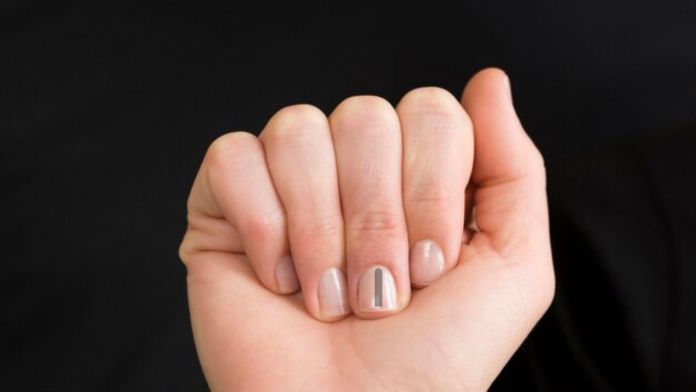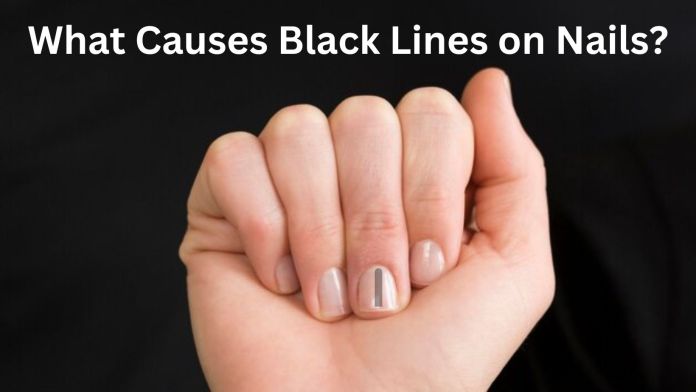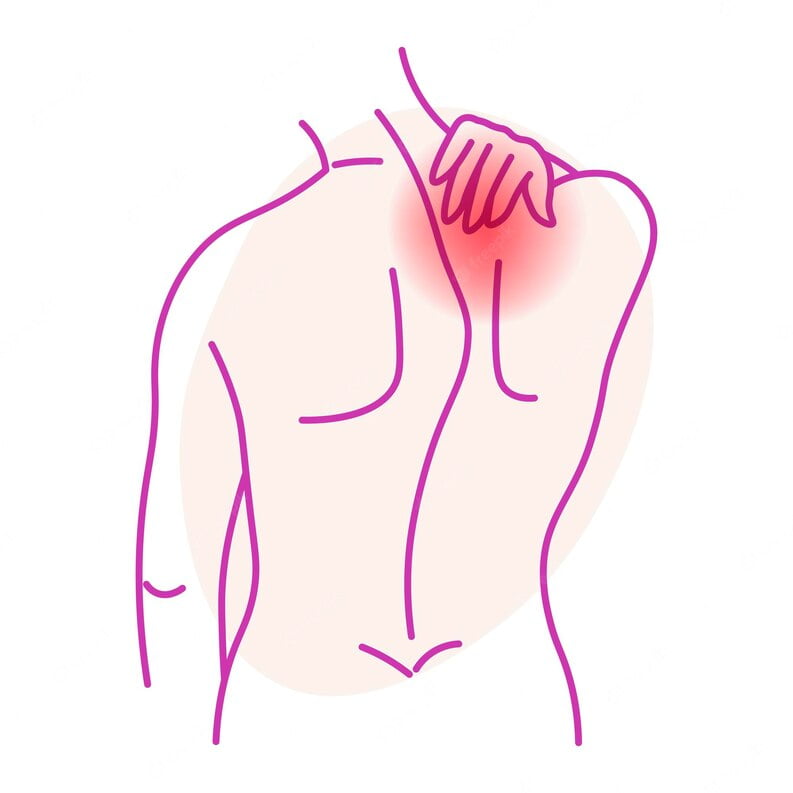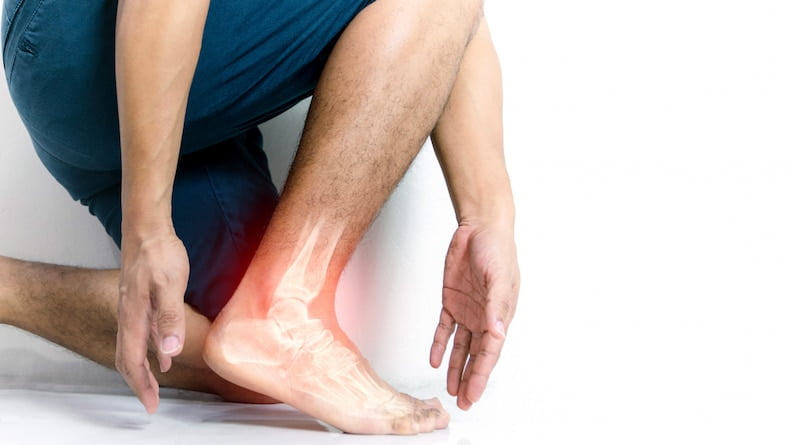Sometimes, our nails can show signs of how healthy we are. One thing that might not be normal is having a black line on your nails. This article talks about why these lines happen, what they can mean, and what you can do about them. If you know about these things, you can figure out if something might be wrong and talk to a doctor if you need to.

What is it exactly?
Dark lines on your nails can show up if you hurt your nail or the skin under it. But, if these lines are thick and cover a big part of your nail, it might mean a really serious type of skin cancer called “Subungual Melanoma.” That name comes from Latin words: “sub” means under, and “unguis” means nail. Melanoma is a cancer that starts in cells called melanocytes, which make the color in your skin, hair, and eyes.
Usually, this type of cancer is found on the thumb or big toe, but it can show up on any fingernail or toenail. People often mistake these lines for a fungus, but that’s not always right. Ignoring these lines can be really bad for your health and even dangerous.
Why Do Black Lines Appear on Nails?
Black lines on nails can show up for different reasons. Some of these are:
- Getting Hurt: If you hurt your finger or toe, like slamming it or hitting it hard, it can make blood go under your nail and make a black line.
- Making Too Much Color: Sometimes, your body makes too much of the color stuff called melanin. This can make black lines on your nails.
- Medicines: Certain medicines, like ones for chemotherapy, can make black lines on your nails.
- Fungus Problems: Sometimes, if a fungus affects your nail, it can change the color and make black lines.
- Serious Skin Cancer: Though it’s not common, a kind of skin cancer called melanoma can also make black lines on your nails.
Melanonychia: Malignant vs. Benign
Melanonychia denotes the presence of pigmented lines or streaks on the nails. It can be classified into two main types: longitudinal melanonychia and transverse melanonychia.[1]
Longitudinal Melanonychia: These are lines that run vertically from the nail’s base to its tip. The majority of cases involving longitudinal melanonychia are benign in nature and typically do not pose significant health risks.
Transverse Melanonychia: In contrast, these are horizontal lines that stretch across the width of the nail. The presence of transverse melanonychia may suggest underlying health conditions and therefore warrants assessment by a healthcare professional.
Potential Signs and Associated Issues
In addition to the observable black streaks on the nails, individuals might encounter accompanying indications and complexities, including:[2]
- Alterations in nail contour, thickness, or feel.
- Fragility or division of the nails.
- Discomfort or sensitivity around the nail matrix.
- Elevation or detachment of the nail from its matrix.
- Infection or inflammation of the neighboring skin.
Diagnosis and Assessment
In order to determine the underlying cause of black lines on nails, a healthcare provider might undertake the following steps:
- Physical inspection: The medical practitioner will examine the impacted nails and discuss any accompanying signs.
- Medical background: They will review the patient’s medical history and inquire about recent injuries or medications.
- Biopsy: If there is suspicion of melanoma or other significant conditions, a small nail tissue sample could be procured for additional examination.
Treatment Possibilities
The approach to addressing black lines on nails hinges on their underlying cause. Potential treatment alternatives encompass:
- Nourishing Nail Health: Aiding healthy nails can involve incorporating vitamin C-rich foods into your diet. Vitamin C is a vital nutrient that bolsters various bodily functions, including nail well-being. It fosters collagen synthesis, a key factor in maintaining robust and resilient nails.
- Observation: Should the black lines are benign and devoid of significant discomfort or complications, specific treatment might not be imperative.
- Managing Trauma: In instances where black lines stem from injury, practicing proper wound care and safeguarding the nail can facilitate the healing process.
- Antifungal Medications: If a fungal infection is diagnosed, a healthcare professional may prescribe antifungal medication to eradicate the infection and reinstate nail health.
- Surgical Measures: In exceptional cases involving melanoma or other malignant conditions, surgical removal of the affected tissue could become necessary.
Guidelines for Prevention and Upkeep
and uphold the comprehensive nail well-being, In order to avert the emergence of black lines on nails and uphold the comprehensive nail well-being, contemplate the ensuing suggestions:
- Safeguard your nails against trauma or harm by employing suitable hand and foot safeguards.
- Ensure your nails remain clean and dry to forestall fungal proliferation.
- Refrain from prolonged exposure to abrasive chemicals and solvents that might harm the nails.
- Sustain a well-rounded diet abundant in vital nutrients to foster robust nail development.
- Consistently moisturize both your nails and cuticles to stave off dryness and fragility.
Modifications for Nurturing Nail Well-Being
Integrating the subsequent adjustments into your lifestyle can foster improved nail health:
- Cease smoking: Smoking can impede blood circulation, which detrimentally influences the state of your nails.
- Curtail interaction with severe chemicals: Decrease exposure to cleaning products and other substances that might undermine or harm your nails.
- Maintain hydration: Ensuring sufficient water intake aids in preserving nail moisture and averting dryness.
- Employ stress management strategies: Prolonged stress can impact nail health, thus partake in relaxation practices such as yoga or meditation.[3]
Wrapping Up
While the presence of black lines on nails and joint pain might raise alarm, it’s vital to refrain from hasty judgments. In the majority of instances, these lines pose no harm and may stem from factors like injury or heightened melanin production. Yet, it remains pivotal to stay vigilant about alterations, including joint pain, reach out to medical experts when needed, and uphold preventive practices to ensure nail well-being. Always keep in mind, a health care specialist can offer precise evaluations and suitable advice tailored to your unique situation, encompassing any joint pain concerns.






Leave a Reply